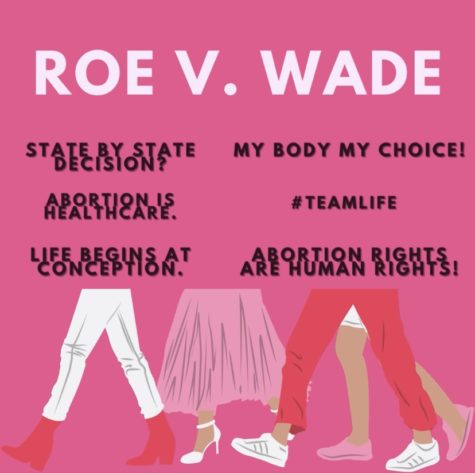Tattoo or Not to?
In the Latrobe Community and across the country more and more teenagers are choosing to tattoo themselves as a form of self-expression. According to a 2017 study by the American Academy of Pediatrics, more young people are choosing to get tattoos and piercings than ever before. It is important for all consumers to be aware of the regulations, risks, and regrets that may come with any permanent decision.
While state laws vary regarding minors and tattoos, Pennsylvania law requires that a parent be present and give written consent before the tattooing procedure takes place.
“Having a parent or guardian signature for a contract of sale regarding a minor is very common. It makes complete sense that a tattoo shop would require this signature. It ensures that a parent/guardian is aware of the risks, and limits the shop’s liability from being sued,” said GLSD law teacher Mrs. Kara Leeper.
Despite PA law that attempts to prevent minors from regretting a lifelong decision, the statistics on tattoo regret are high.
78% of people who have a tattoo end up regretting the decision according to an Advanced Dermatology polling of 600 tattoo consumers. The research done by Advanced Dermatology even breaks down how soon the consumer starts to dislike their tattoo and the results show that 51% of people regret their decision in just a year or less.
The study also analyzes why each consumer has regret. With 40% of consumers disliking the appearance of their tattoo and 31% no longer relating to it’s significance anymore, this permanent decision is not one to rush, yet “three out of four people who suffer from tattoo regret didn’t plan for the tattoo beyond a few weeks,” according to Advanced Dermatology’s 2019 study.
Despite high numbers of regret among tattoo consumers, the majority of individuals who attribute significant meaning to their tattoo, are less likely to dislike their decision later in life.
“The main reason for the tattoo on my shoulder was because I had a wrestling coach that passed away and he really influenced me in life so I figured I’d get a tattoo for him,” said GLSD junior Brady Johnson.
While there are many instances where tattoo consumers relate personal and touching stories to their tattoos, the majority of tattoo consumers will end up regretting their tattoo in the long run.
GLSD Senior Matthew Hess recently made the decision to purchase a tattoo on his wrist. With a written note from his mother, Hess’s wrist was inscribed with cursive font that reads “Rat Pack” for the famous 1960 band featuring Frank Sinatra and Sammy Davis Jr.
While Hess is adamant that his love for the “Rat Pack” will never grow old, he has a plan in place if regret surfaces.
“If I want to get it removed I will just go get laser tattoo removal one day,” said Hess.
While laser clinics and dermatology centers are becoming less obsolete with a 400% increase over the last decade, the process isn’t as simple or painless as one might believe and one should be prepared for a hefty bill with the average revenue generated by laser tattoo removal at $1,400 per patient. (2017 report by Fresh Start Laser Tattoo Removal Clinic)
“Depending on the tattoo design, size and color, it may take 1-10 laser sessions to remove the ink. Some colors of ink are harder to remove than others and may not be able to be completely removed. There should be a six-week time period between each laser session to allow the wounds to heal and the body to absorb as much of the ink as is possible. Many patients describe it as like having a heavy rubber band snapped against the skin repeatedly, ” according to the American Society of Plastic Surgeons.
While getting a tattoo is less painful than having one removed, both processes require the use of needles which introduce possible health concerns and skin irritation.
“I got my tattoo and eventually it started peeling because that’s what happens when you get a tattoo, and you’re supposed to just leave it alone but I decided to peel it and it ended up scarring. It pulled back a bunch of skin and made a scar on top of this one spot on my tattoo,” said Hess.
While Hess suffered from both skin irritation and scarring, he didn’t experience other serious complications that may occur.
“In anything you do to break your skin there is always a risk of infection, becoming infected with a bloodborne pathogen, Hepatitis, HIV and Aids are a concern of course with blood, but Hepatitis is big and real and that would be my main concern with tattoos,” GLHS Nurse Tami Zezza said.
As a young adult Nurse Zezza was drawn to the appeal of tattoos as a form of rebellion, but in time the appeal faded and her stance on tattoos changed.
“When I was young and in my 20’s I thought about getting a tattoo and even went to a tattoo parlor and picked out the one I wanted. I am so glad I didn’t do it. For many reasons I am glad I didn’t do it. Honestly the allure for me to get one was because when my mom didn’t approve of it–I thought I want to get a tattoo–and then one day she said go ahead and do what you want and then the appeal stopped for me.”
After being educated on the risks and pursuing an active career in nursing, her advice for prospective tattoo consumers is not to get one.
I would say don’t get a tattoo. You have to live with it for life and what you want today at your 18 or 21 year old self, when you became old like me, like the Betty Boop on your wrist isn’t going to be your favorite thing and they are hard to remove and they are painful to remove even though you can, and I know it’s a creative form of expression but I would say do lots of research if you are going to definitely get tattooed,” Zezza said.
With tattoos as a popular rising form of self-expression, any prospective consumer should be educated and know the possible risks, regulations, and regrets that can occur when precautions and concerns are unknown or not followed.

I grew up here in PA, but spent the last 8 years in CA and just returned to finish out my Senior year at Greater Latrobe. It’s great to be back here--...












